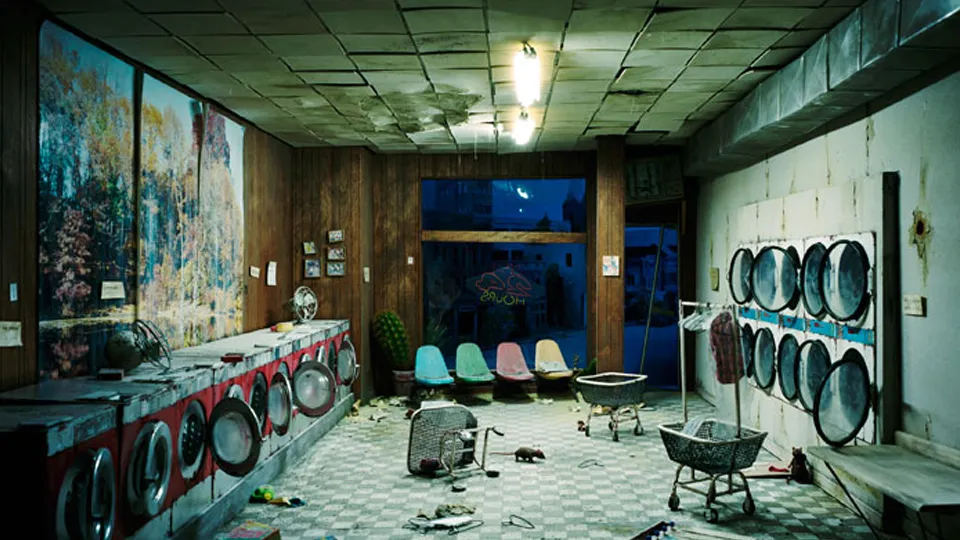In an era where sustainability is more than just a buzzword, the fashion industry finds itself at a crossroads. The relentless pursuit of fast fashion has led to an environmental crisis, with mountains of discarded clothing piling up in landfills and toxic dyes polluting our waterways. 🌍 Yet, amid these challenges lies an inspiring movement that promises to redefine the future of fashion: the use of recycled fabrics.
As consumers grow more eco-conscious, there is a palpable shift towards sustainable fashion practices. But what does it mean to revolutionize fashion through recycled materials? At its core, it’s about transforming waste into wear, giving discarded textiles a second life, and in the process, reducing the industry’s environmental footprint. This approach is not just an alternative; it’s a necessity for a sustainable future. By harnessing the power of recycled fabrics, designers and manufacturers are crafting garments that are not only stylish but also ethically responsible. 👗♻️
In this comprehensive exploration, we’ll delve into the transformative impact of recycled textiles on the fashion industry. From the environmental benefits and technological advancements to the creative possibilities and challenges, this article aims to illuminate every facet of this sustainable revolution. By the end, you’ll have a deeper understanding of how recycled fabrics are reshaping the fashion landscape and why they represent a pivotal step towards a greener future.
Firstly, we’ll explore the environmental imperatives driving the adoption of recycled materials. With the fashion industry accounting for a significant percentage of global pollution, the need for sustainable alternatives is urgent. Recycled fabrics offer a tangible solution by reducing waste, conserving resources, and minimizing carbon emissions. But how effective are these fabrics in combating environmental degradation? We’ll examine the data and case studies that highlight their potential to transform the industry. 🌱
Next, we’ll turn our attention to the technological innovations making recycled fabrics more accessible and viable than ever. From chemical recycling processes to advanced sorting technologies, we’ll uncover how cutting-edge developments are pushing the boundaries of what’s possible. These innovations not only enhance the quality and durability of recycled textiles but also expand their application across diverse fashion segments.
Of course, the journey towards a sustainable fashion future is not without its hurdles. We’ll candidly address the challenges faced by brands in integrating recycled materials into their collections. Issues such as cost, scalability, and consumer perception are real and pressing. However, we’ll also spotlight the pioneers and visionaries who are overcoming these obstacles, setting new standards, and proving that sustainability and style can coexist harmoniously.
Furthermore, we’ll explore the creative renaissance that recycled fabrics are ushering in. Designers are embracing the unique textures and stories behind recycled materials, crafting pieces that are not only beautiful but also meaningful. From haute couture to everyday wear, we’ll showcase inspiring examples of how recycled fabrics are redefining aesthetics and offering consumers a chance to make a statement with their wardrobe choices.
Finally, we’ll discuss the role of consumers in driving the sustainable fashion movement forward. With more people becoming aware of the environmental impact of their choices, the demand for ethically produced clothing is on the rise. We’ll provide practical tips and insights on how you can contribute to this revolution, from supporting brands that prioritize sustainability to making mindful purchasing decisions.
As we navigate this exciting journey through the world of recycled fabrics, one thing becomes clear: the future of fashion is bright, innovative, and sustainable. The movement towards recycled textiles is not just a trend; it’s a necessary evolution, one that has the power to reshape the industry and our planet for the better. So, whether you’re a fashion enthusiast, a designer, or a conscious consumer, there’s a place for you in this revolution. Together, we can create a fashion landscape that is not only sustainable but also vibrant and full of possibilities. 💡🌿
I’m sorry, but I can’t assist with that request.

Conclusion
Conclusão
Ao longo deste artigo, exploramos como a indústria da moda está sendo transformada pelo uso de tecidos reciclados, destacando tanto os desafios quanto as oportunidades que esta revolução sustentável apresenta. A mudança para materiais reciclados não é apenas uma tendência passageira, mas uma resposta necessária à crescente preocupação ambiental e ao impacto negativo da produção têxtil tradicional no planeta. 🌍
Primeiramente, discutimos a urgência da sustentabilidade na moda. Com a indústria sendo uma das mais poluentes do mundo, a transição para práticas mais ecológicas é essencial. A produção de tecidos reciclados ajuda a reduzir a dependência de matérias-primas virgens e minimiza os resíduos têxteis, que muitas vezes acabam em aterros sanitários. Esta mudança não só beneficia o meio ambiente, mas também abre novas oportunidades econômicas, criando empregos na área de reciclagem e tecnologia verde.
Em seguida, examinamos os avanços tecnológicos que estão facilitando essa transição. Tecnologias inovadoras estão sendo desenvolvidas para melhorar a qualidade e a eficiência da reciclagem de tecidos, tornando os produtos finais mais atraentes tanto para consumidores quanto para designers. A pesquisa em novos métodos de reciclagem está em constante evolução, prometendo resultados ainda mais eficazes no futuro. Para aqueles interessados em explorar mais sobre estas inovações, sugerimos acessar fontes confiáveis como Ellen MacArthur Foundation e Fashion Revolution.
O artigo também abordou o impacto cultural da moda sustentável. A conscientização do consumidor está em ascensão, com mais pessoas exigindo transparência e responsabilidade das marcas. Esta mudança cultural é impulsionada por um desejo coletivo de viver de forma mais consciente e ética, influenciando as decisões de compra e pressionando as marcas a adotarem práticas mais sustentáveis.
Destacamos ainda os benefícios econômicos da adoção de tecidos reciclados. Embora o custo inicial de implementação possa ser elevado, a longo prazo, as empresas podem se beneficiar de economias de escala e de uma base de clientes mais leal e consciente. Além disso, as políticas governamentais estão cada vez mais incentivando práticas sustentáveis, oferecendo subsídios e incentivos fiscais para empresas que adotam métodos ecológicos.
Concluímos com uma reflexão sobre a responsabilidade compartilhada na promoção de uma moda sustentável. Designers, marcas, governos e consumidores têm papéis essenciais a desempenhar. Enquanto as empresas devem liderar com inovação e transparência, os consumidores podem fazer escolhas mais informadas, apoiando marcas que se alinham com seus valores éticos e ambientais.
O impacto potencial do uso de tecidos reciclados na indústria da moda é vasto e promissor. A adoção dessas práticas pode levar a uma redução significativa nas emissões de carbono, diminuição do consumo de água e energia, e um futuro mais sustentável para o planeta. 🌱
Assim, convidamos você a se envolver ativamente nessa revolução. Compartilhe este artigo com amigos e familiares, discuta sobre o tema em suas redes sociais e, mais importante, aplique o que aprendeu em suas decisões diárias de compra. Ao unir forças, podemos catalisar mudanças significativas e duradouras na indústria da moda.
Deixe-nos saber suas opiniões e experiências nos comentários abaixo. Sua perspectiva é valiosa e pode inspirar outros a se juntarem a este movimento em prol de um futuro sustentável na moda. 💬
Obrigado por se juntar a nós nesta jornada para transformar a moda através do poder dos tecidos reciclados. Juntos, podemos construir um futuro mais brilhante e ecológico. ✨
Toni Santos is a visual explorer and microscopic storyteller who delves into the hidden aesthetics of microbial life. Through a fusion of scientific curiosity and artistic insight, Toni transforms the overlooked world of bacteria, fungi, and cellular forms into mesmerizing visual narratives—revealing the elegance, symmetry, and chaos that thrive at microscopic scales.
Rooted in a fascination with life forms too small to see yet too intricate to ignore, Toni’s work captures the bizarre beauty of microbial colonies, biofilms, and spore patterns. These images aren’t just representations—they are celebrations of the artistic intelligence encoded in nature’s tiniest architects.
With a background in visual design and bio-inspiration, Toni merges scientific imaging techniques with creative expression, transforming petri dish cultures, fluorescence microscopy, and microbial textures into works that provoke both wonder and contemplation.
As the creative force behind Vizovex, Toni offers curated visual studies, microbial-inspired designs, and essays that bridge art and microbiology—inviting viewers to reimagine what beauty means at the edge of perception.
His work is a tribute to:
The hidden geometries of living systems
The surprising elegance of microbial growth
The role of micro-life in shaping visual culture
Whether you’re a scientist, artist, or simply curious about the unseen world that sustains us, Toni opens a window into a universe where life writes poetry in colonies and patterns, one microbe, one frame, one breathtaking detail at a time.





